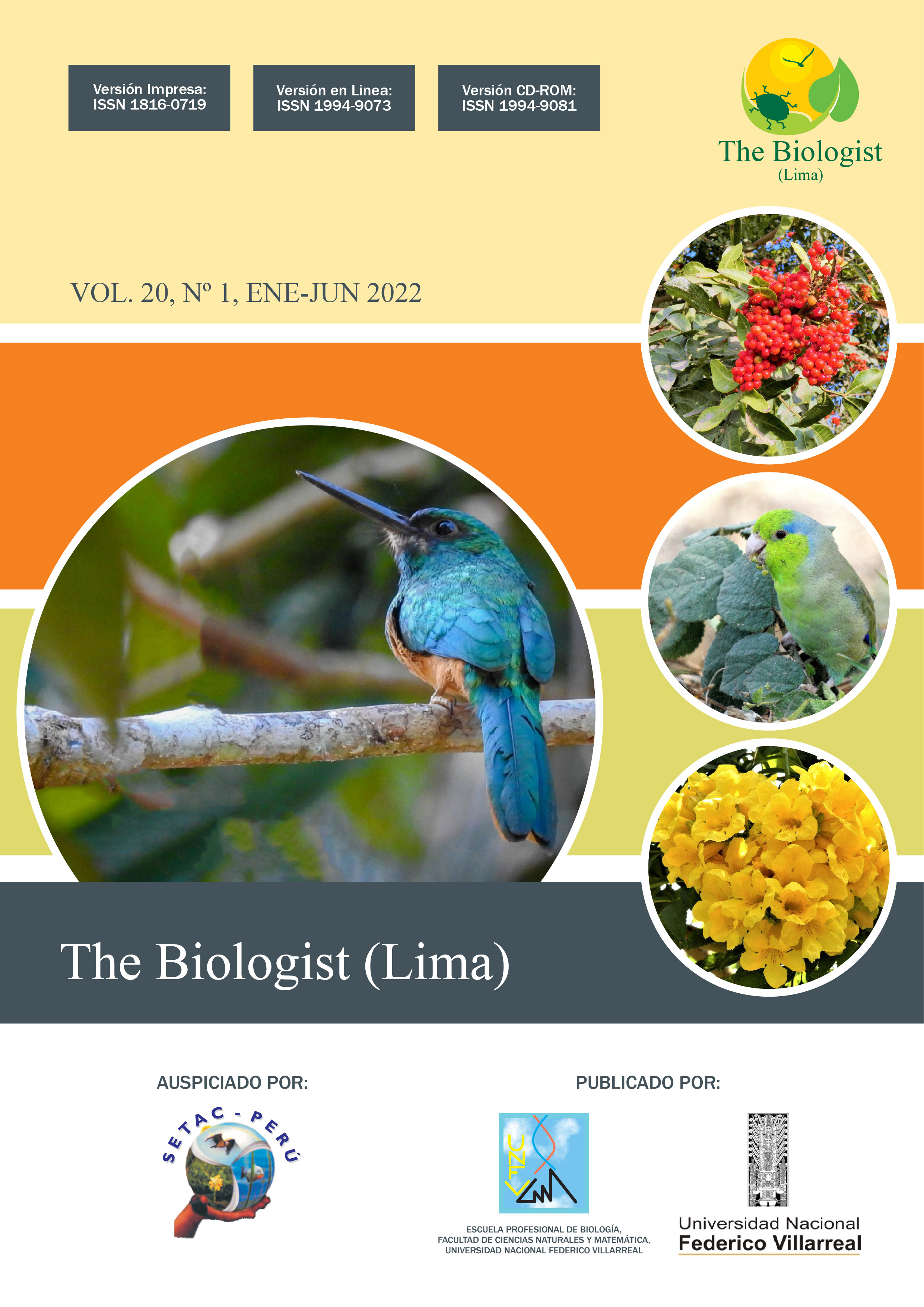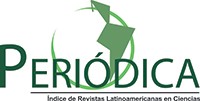POTENCIAL DE RIESGO ECOTOXICOLÓGICO POR HIDROCARBUROS EN EL ECOSISTEMA COSTERO-MARINO DE VENTANILLA, CALLAO-PERÚ: PARTE - I
DOI:
https://doi.org/10.24039/rtb20222011321Palabras clave:
ecosistema costero-marino, desastre ecológico, fauna acuática, petróleo, riesgo ecotoxicológicoResumen
El propósito del estudio fue describir el potencial ecotoxicológico por hidrocarburos en el ecosistema costero-marino de Ventanilla, Callao-Perú. Se menciona, que los hidrocarburos de petróleo al adsorberse en los materiales particulados, sedimentos y los tejidos de la fauna acuática ocasionan un desequilibrio ecológico. Asimismo, se producen daños hepáticos y las branquias de los peces, afectación en el crecimiento y la productividad en biomasa. Los efectos pueden ser a agudos (ej.: mortalidad, necrosis, mutagenicidad, asfixia) y crónicos (ej.: procesos de biomagnificación y pérdida de la biodiversidad). Se realizó una predicción de riesgo ecotoxicológico de tipo conservadora mediante el programa computacional Gecotoxic® donde el descriptor de análisis ambiental indicó calificación de tipo alta (81%), mientras que, el descriptor de efecto ambiental igualmente fue de predicción alta, pero al 100 %. Se concluye, que deben evaluarse diversos parámetros para considerar los riesgos a la salud humana como son: concentración equivalente de potencia, valor de barrido de matriz, modelo de riesgo carcinogénico de por vida, máximo consumo diario y factores de equivalencia tóxica. De igual modo, debe entender diversas preguntas en la dinámica de reversibilidad para las zonas afectadas y entre las que se mencionan: 1ro) ¿qué organismos invertebrados pueden considerarse como futuros indicadores de la calidad ambiental costero-marina, 2do) ¿cómo evolucionará la fauna macrobentónica? 3ro) ¿en qué tiempo se restablecerá la interacción trófica?, 4to) ¿cuáles especies amenazadas o en peligro de extinción se afectaron? y 5to) ¿cuánto es la repercusión económica sobre las comunidades pesqueras tradicionales?
Descargas
Publicado
Cómo citar
Número
Sección
Licencia

Esta obra está bajo una licencia internacional Creative Commons Atribución-NoComercial-SinDerivadas 4.0.
Objeto: El AUTOR-CEDENTE transfiere de manera TOTAL Y SIN LIMITACIÓN alguna al CESIONARIO (Revista The Biologist (Lima)) los derechos patrimoniales que le corresponden sobre sus obras por el tiempo que establezca la ley internacional. En virtud de lo anterior, se entiende que el CESIONARIO adquiere el derecho de reproducción en todas sus modalidades, incluso para inclusión audiovisual; el derecho de transformación o adaptación, comunicación pública, traducción, distribución y, en general, cualquier tipo de explotación que de las obras se pueda realizar por cualquier medio conocido o por conocer en el territorio nacional o internacional.
Remuneración: La cesión de los derechos patrimoniales de autor que mediante este contrato se hace será a título gratuito.
Condiciones y legitimidad de los derechos: El AUTOR-CEDENTE garantiza que es propietario integral de los derechos de explotación de la(s) obra(s) y en consecuencia garantiza que puede contratar y transferir los derechos aquí cedidos sin ningún tipo de limitación por no tener ningún tipo de gravamen, limitación o disposición. En todo caso, responderá por cualquier reclamo que en materia de derecho de autor se pueda presentar, exonerando de cualquier responsabilidad al CESIONARIO.
Licencia de acceso abierto: El AUTOR-CEDENTE autoriza que manuscrito publicado en la Revista Científica The Biologist (Lima) (versión Impresa ISSN 1816-0719, versión en línea ISSN 1994-9073) permanece disponible para su consulta pública en el sitio web http://revistas.unfv.edu.pe/index.php/rtb/index y en los diferentes sistemas de indexación y bases de datos en las que la revista tiene visibilidad, bajo la licencia Creative Commons, en la modalidad Reconocimiento-No comercial- Sin Trabajos derivados –aprobada en Perú, y por lo tanto son de acceso abierto. De ahí que los autores dan, sin derecho a retribución económica, a la Escuela Profesional de Biología, Facultad de Ciencias Naturales y Matemática de la Universidad Nacional Federico Villarreal (EPB - FCCNM - UNFV), los derechos de autor para la edición y reproducción a través de diferentes medios de difusión.









































